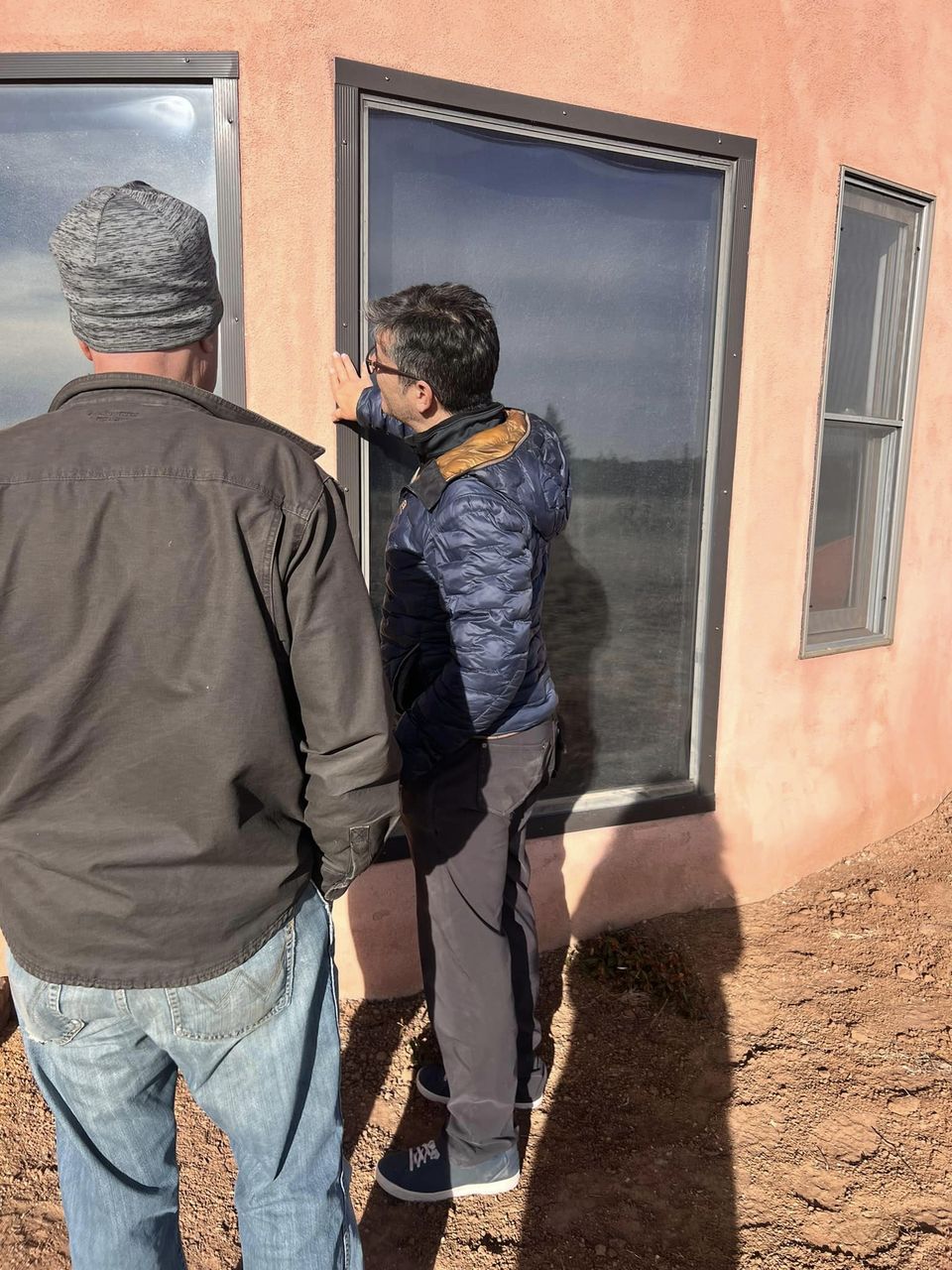At inspections with a structural engineer.
Can you say Trombe wall? It’s behind two glass windows in this living room we are helping a buyer to purchase in Santa Fe. There is only a wood burning stove and this trombe wall in the living room.
A Trombe wall is a passive solar heating system that uses a thick masonry wall to absorb and store solar heat during the day and release it slowly during the night. The wall is usually constructed on the south-facing side of a building and is combined with a layer of glass or other transparent material to enhance heat absorption.
Advantages of Trombe walls:
1. **Energy Efficiency:** They can significantly reduce heating costs by utilizing solar energy.
2. **Low Operating Costs:** Once installed, Trombe walls require minimal maintenance and have no operating costs.
3. **Environmental Friendly:** They contribute to reducing reliance on non-renewable energy sources, promoting sustainability.
Disadvantages of Trombe walls:
1. **Space Requirements:** Trombe walls can take up space, limiting architectural design options.
2. **Limited Cooling Benefits:** While effective for heating, they may not contribute much to cooling during warmer seasons.
3. **Initial Cost:** The initial construction cost might be higher compared to conventional heating methods.
The suitability of a Trombe wall depends on factors such as climate, building design, and local conditions.
Trombe walls are relatively common in New Mexico, particularly in areas with a high amount of sunlight and a need for heating during cooler seasons. The state’s sunny climate makes it well-suited for passive solar heating systems like Trombe walls. However, the prevalence of Trombe walls can vary based on factors such as local building codes, architectural preferences, and individual homeowners’ choices.
With help from my little friend ChatGPT



 Facebook
Facebook
 X
X
 Pinterest
Pinterest
 Copy Link
Copy Link


